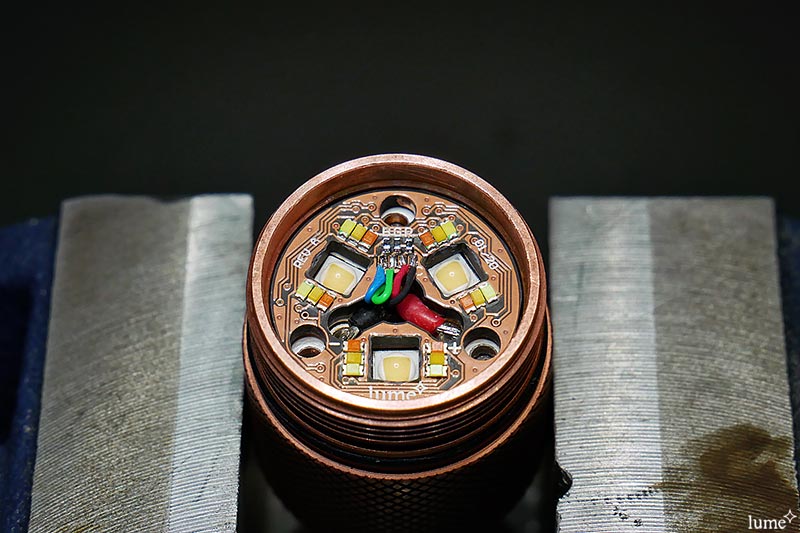Hello all,
I hope everyone is doing well and staying safe in the worldwide outbreak.
Here's a quick update with some developments for the lume1 project. I received boards for Aux LEDs for the FW3A flashlight and their variants. Unlike regular AUX boards, this one takes advantage of the full RGB capability of Anduril, allowing for a host of different features and capabilities.

Here's the LED board. A total of 18 LEDs for board, 6 of each R, G and B LEDs.
I had some other colour LEDs so I populated them as follows - pink as red, warm-white as green, and cyan as blue. The LED board is a little thick in this iteration, and 0.8mm PCBs should be better, but this works as well. LEDs used were 0603 LEDs on large 0402 pads. I had ordered 0402 LEDs but they haven't yet arrived.
AUX LED control is the same as the one implemented in Anduril for 1634 MCUs such as in the Emisar D4V2 and the Noctigon K1. There are several different modes such as different colours (red, green blue, yellow, cyan, magenta, white), as well as 'rainbow' and battery voltage display. There is also high and low brightness control.
Recommend LED wiring is 24-20AWG depending on what you have. For the LED wires, I used 30AWG.

After soldering on the LED wires to the AUX board above.

And finally, here's the Aux board in action, compared to a glow-gasket with my FW21. In this photo, I had previously used a green-yellow LED for the green channel. I since replaced that with warm white since I thought it came out better.
More to come soon.
Stay safe and healthy everyone!


